Introduction
In theory, developing an Amazon product description should be easy. In practice though, that’s rarely the case.
You can’t just list out the product dimensions and a couple of features and call it a day.
It requires preparation, an understanding of the benefits your customers are looking for, and, of course, knowing what Amazon wants.
But having an Amazon product description template would take out the guesswork.
Luckily, that’s what this guide aims to provide you.
What You Need To Know About Amazon’s SEO Algorithm
You’ve likely heard the term SEO as it relates to popular search engines, but you may not have known that Amazon, though primarily a marketplace, also operates as a search engine.
It only indexes the products on its site, but it relies on SEO to show the most relevant, and most likely to sell, listings to its customers.
Amazon has its own algorithm called A9 that determines where a product will show up in the search results.
A9 considers many factors but the two we will focus on for the purpose of writing your product description are your listing’s click-through to sales ratio and your product keywords.
Product keywords

Without keywords, your product will not show up in the most relevant search results, so no matter what else you do right in your product listing, it won’t get you results.
You need to do in-depth keyword research before starting your product listing. We’ll cover a few tips below, but if you aren’t sure how to find a comprehensive list of keywords to test, check out our comprehensive keyword research guide.
You should include keywords in your product title, product description, and in the backend of your listing.
When adding your keywords remember that you only need to add each keyword once anywhere in the listing for it to be indexed. Don’t waste space for additional keywords by repeating them.
Click-through to sales conversion ratio
Amazon makes money off of the products that sell so it makes sense that they want to put those products in front of the shoppers on their site first.
Both your click-through rate and your sales page will be considered. More importantly, your click-through to sales conversions ratio will be factored in.
If your product receives a high rate of clicks in the search results but not a lot of customers purchase, your listing will be indexed further down over time.
Your listing will also be hurt if it doesn’t get customers to click-through, even if the customers that do end up buying most of the time because that sales volume likely won’t scale.
The key is to get enough people intrigued by your product to go to your product page, and then make your product description close the sale.
How To Prepare For Writing Your Product Description
Writing a product description that sells is not as easy as sitting down to a keyboard and typing out your product’s features.
While that approach is taken by some Amazon sellers, it will cost you conversions.
You need to do a little research to prepare to write a description that makes your customers choose your product over all of the other options.
LEARN ABOUT YOUR CUSTOMER
How can you market your product to a customer you know nothing about?
The answer is: you can’t. At least not successfully.
You need to get to know who your customers are and what problems they are trying to solve.
To start, gather demographic data about your target audience. This includes information like their age, sex, location, income level, and other interests.
You then want to dig deeper and look at what problem they’re trying to solve with your product that the current products on the market are struggling to do. You can accomplish this by digging into customer reviews of similar products.
Focus on three and four-star reviews where the reviews are more granular and detailed.
The final step is to learn to use the language that your customers are using. You can do this by googling common terms or questions related to your product then finding Facebook groups or forums discussing the topics.
Create a document and collect any phrases or comments that stand out that you could pull inspiration from when writing your description.
PUT YOURSELF IN YOUR BUYER’S SHOES
Now that you know all about your customer, you want to physically go through the process they will to purchase your product.
Say you sell high-end speakers, what would be your first step if you were shopping for your product?
Maybe you would search for articles around what features to look for when buying speakers.
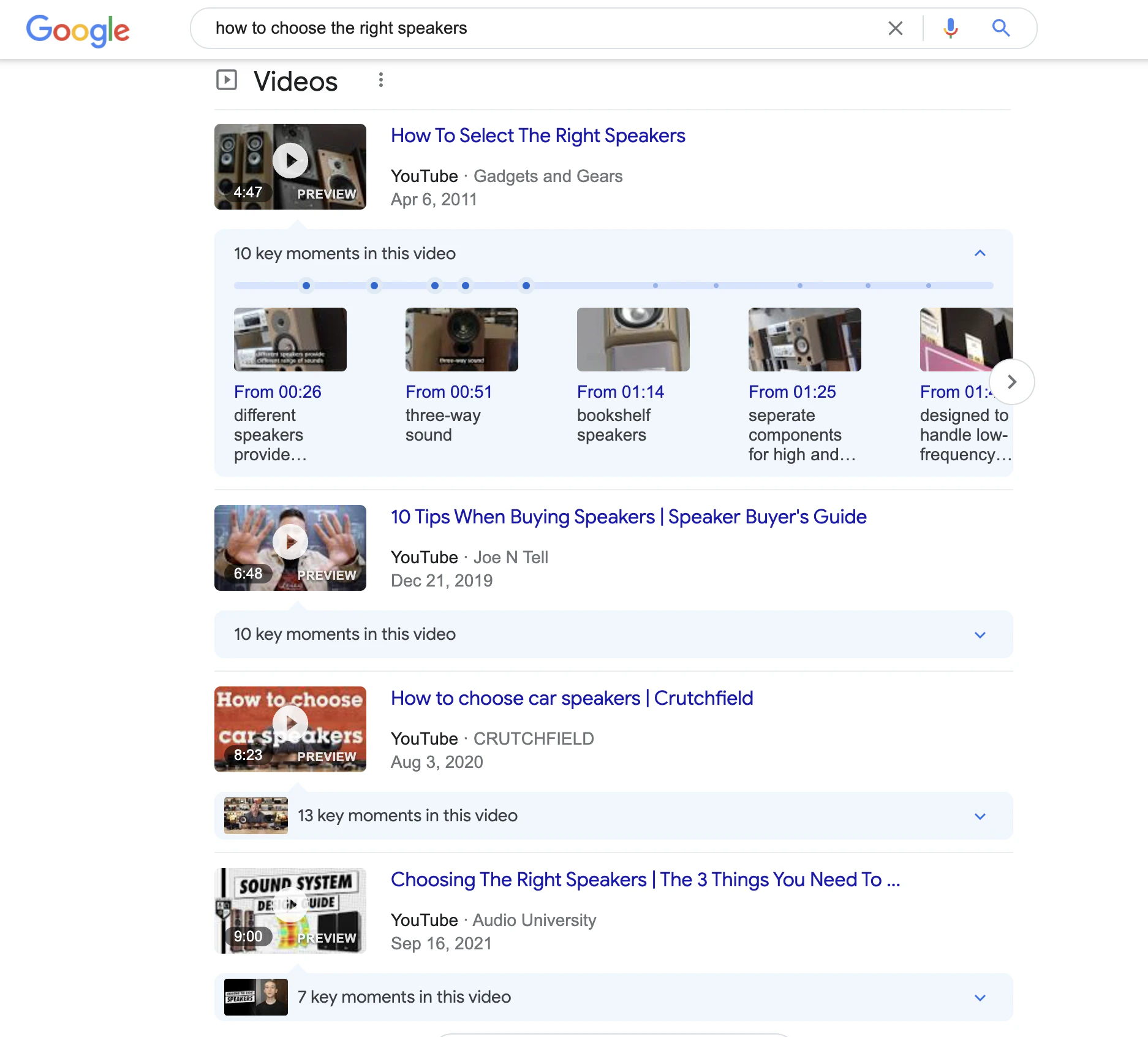
This information would help guide you on what to include in the description.
You could do an Amazon search to compare how similar products are described and see what descriptions are appealing to you as a buyer, not a seller.
Try this not just for your product, but other products you are truly interested in buying to get more ideas and make sure you aren’t creating roadblocks in the process.
DON’T BE LAX ON KEYWORD RESEARCH
As noted above, keyword research is not something that can be ignored.
When you’re starting on Amazon, you might find you have better luck with long-tail keywords versus the high volume, broad search terms.
Long-tail keywords display higher buyer intent and eliminate some of the competition. Two things that only benefit you as a seller, especially while building up your other metrics.
The easiest way to start your keyword research is to start typing in the Amazon search bar and see what auto-populates.
This will show you search terms real users have used to look for products. You’ll need to start with a “seed keyword” – a broad term for your product – to enter though.
You can also do the same thing on Google to see if there are additional results.
Once you’ve done the manual steps, you can move to a keyword tool. There are both free and paid options available.
You’ll need to evaluate the relevance of each suggestion to your product and look at the competition for each keyword before making your final decision on what to add to your description.
DON’T LET YOUR COMPETITORS TRICK YOU
Often sellers are guilty of assuming that what their competitors are doing is working.
But you have no idea what is going on behind the scenes.
Even products that show up high in the search results or are labeled as “best sellers” may not have the highest conversion rates.
Sometimes competition for a product is low enough (normally for a short time) where even a product with a poor description can get sales.
This isn’t going to last long-term though. You need to develop a product description that you’ve done the homework on, tested, and can count on to get customers to buy.
Don’t let your competitors potentially “fake” success be your only guide on how you develop your product.
The Complete Amazon Product Description Template
You’re now ready to start writing your product description, but we won’t make you come up with it all on your own.
Below we look at all the information that should go in your description to help you convert more customers.
CREATE A PRODUCT DESCRIPTION AROUND YOUR TARGET CUSTOMER
All the customer research you did in preparation for writing your product description will come in handy for developing a description that speaks to your ideal customer.
Remember the demographics of the people you are speaking to as well as the problems they are trying to solve with your product.
Help them to feel confident that your product will meet their needs.
For example, if you sell a water softener that attaches to your customer’s showerhead, you might want to focus on how your product will leave their skin feeling softer and requiring less moisturizing products that only cost them more in the long run.
OPTIMIZE YOUR LISTING’S CONTENT TO MAKE IT MORE READABLE
When customers are shopping on Amazon, they want to be able to quickly browse your description to learn if your product is the right choice.
You need to make your product description effortlessly digestible for your customer.
A way that many sellers do this is by using clear and concise phrases, utilizing punctuation to eliminate the strain of trying to take in one large block of text.
This is where bullet points can come in handy. Bullets are perfect for presenting the benefits of your product.

You could test using all caps to highlight key pieces of product information within your description.
Your product title may also be improved by keeping it succinct.
On mobile, only about 70 characters of your title are shown, so that’s a good length to aim for.
SHOWCASE YOUR PRODUCT BENEFITS

You have probably heard this before, but when writing your description you need to make it about your product’s benefits, not the features.
You sell a pen with quick-drying ink as a feature, and the benefit is not having to worry about smearing ink on your paper as you write.
People who drag their hand as they write will immediately identify with and appreciate the benefit. They will imagine what it’s like to write with your pen, making it feel like they are missing out on a superior writing experience without it.
Benefits can often be thought of as how the buyer’s life will improve once they purchase your product.
CONQUER POSSIBLE CUSTOMER OBJECTIONS
Looking at product reviews is the fastest way to learn about common customer objections.
Maybe they feel that other products on the market don’t live up to their price. Or maybe a common concern is the way a product is manufactured or the materials used.
If your product can overcome any of the objections you find on other product reviews, you will want to include it in your product description.
ANSWER ANY PROBABLE QUESTIONS
Knowing what questions to answer in your description becomes easier once your product has been on the market for a while and customers get a chance to give feedback, but when you are first setting up your listing you will have to make some assumptions based on other product listings and your own knowledge.
Consider what questions you would need answered about your product if you were completely clueless before feeling confident in purchasing.
Describe the size, color, materials, and anything else that your customer needs to be clarified before they can buy in your description.
WRAP UP WITH A CALL-TO-ACTION
It may seem obvious to you what you want your customer to do… buy your product!
But if you want something, it never hurts to ask for it.
While you don’t necessarily want to say “buy it now”, you want to encourage your customer to move forward to the next step in a clear way.
In your description, you will want to finish by encouraging your customer to try your product.
One way you can subtly do this is by displaying your product guarantee (i.e. “Try it for 30 days and if you don’t love it return it with no questions asked”) as the last piece of your product description.
The 3 No’s For Amazon Product Descriptions
Never plagiarize your description.
This should go without saying, but never steal copy from another product description for your own.
Even if you come across what you think is a great example, you want to use it to come up with your own ideas for how to mimic it, not use it outright.
For your product to get sales, you need to have your unique product benefits clearly articulated in your description. Using the same description will lump you in with your competitor’s product instead of allowing you to stand out.
Don’t use product descriptions created by generators.
There is a shortcut for everything, including creating product descriptions.
It may be tempting to use a product description generator to take some of the work off of you, but these often end up being low quality and aren’t informed by your customer research.
Your product description is worth the effort.
Don’t keyword stuff your descriptions.
You know how valuable keywords are to getting your listing found, but stuffing your description full of keywords makes it difficult for your customers to learn about and connect with your product.
Keyword stuffed product descriptions don’t convert as well as product descriptions written for the customer.
Customer experience should be the first priority, keywords the second.
Bonus: Amazon A+ Product Description Template
HOW IS AN A+ CONTENT DESCRIPTION DIFFERENT FROM A STANDARD PRODUCT DESCRIPTION?
The standard product description limits how you can present your product to plain text.
A+ content replaces your text product description (for sellers at least) and allows you to present your “description” through modules that include images, copy, videos, and even product comparisons to other products under your brand.
WHO IS ELIGIBLE TO USE A+ PRODUCT DESCRIPTIONS?
Not all sellers are eligible to use A+ content.
Only sellers that are part of the Amazon Brand Registry (version 2.0) have access to A+ product descriptions.
To qualify for the brand registry, you need to have an active registered trademark (text or image-based). You do not qualify until the trademark is approved, which can take several months.
If you are hoping to utilize A+ content, you’ll want to apply for a trademark as soon as possible.
A+ DESCRIPTION BENEFITS

There are numerous benefits to A+ content for eligible brands to take advantage of.
More visually appealing.
Let’s be honest, blocks of text, or even bullets, are not particularly appealing to the eye.
Ecommerce sales increase with quality photos and videos, which you only get to use in your product description if you have access to A+ content.
Highlight key product details.
A+ content makes it much easier to showcase your product’s key benefits than a regular product description.
When you can pair images with short copy, you can communicate your product more clearly to your customers.
Share your story.
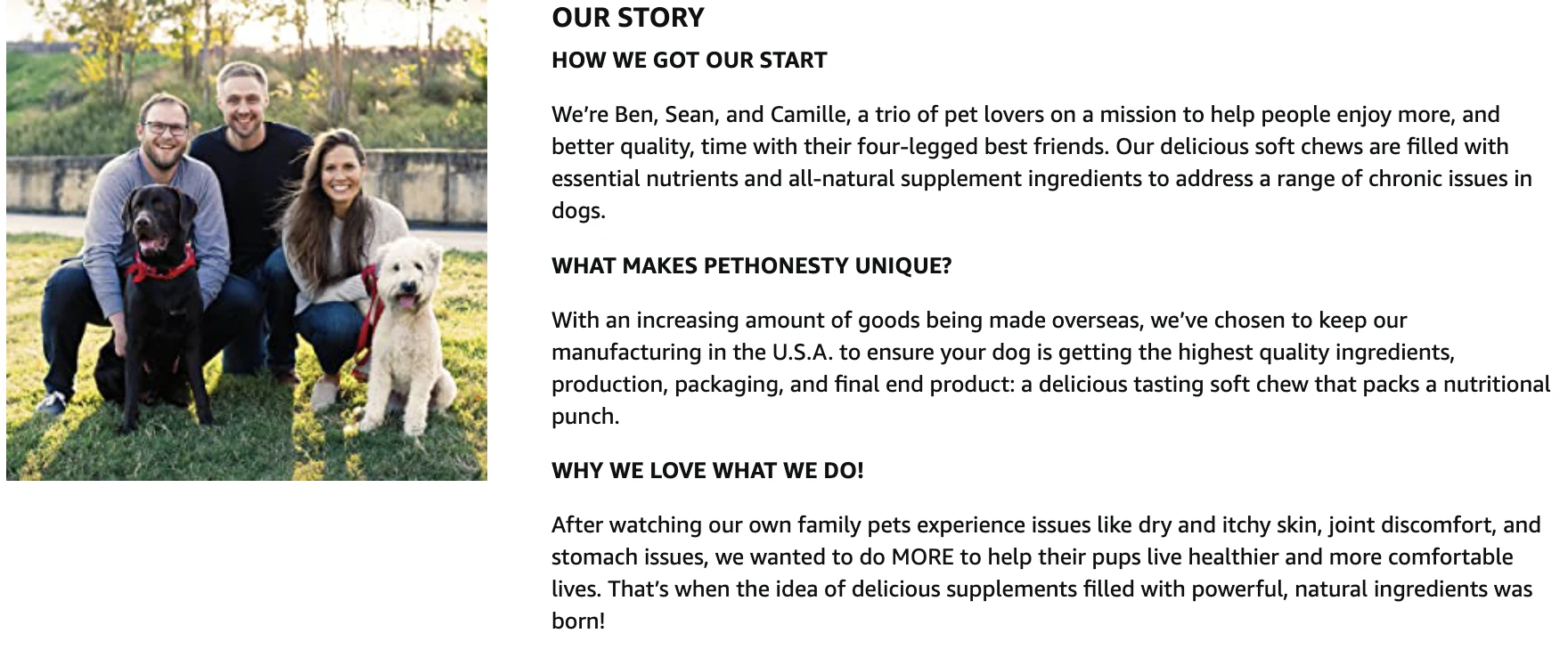
Customers like to feel like they are purchasing from a brand they can trust.
Sharing your story is one way you can form that connection with your customers.
Telling your story can create brand loyalty so that customers who are happy with your product will come back to your brand the next time they need a similar product.
The standard product description doesn’t allow you the platform to tell your brand story the way A+ content does.
Could improve your conversion rate.
According to Amazon, brands that use A+ content could see their conversion improve 3-10%.
That’s a pretty impressive bump from the plain text product description.
This will also compound the efforts from any additional marketing like PPC campaigns.
Lower your return rate.
Through detailed photos, key benefit shout-outs, and product videos in A+ content, you can clearly communicate why your product is the best choice for your customers.
This helps customers answer any questions they may have not been able to answer before your product got to them before resulting in a lower return rate.
Generate fewer negative reviews.
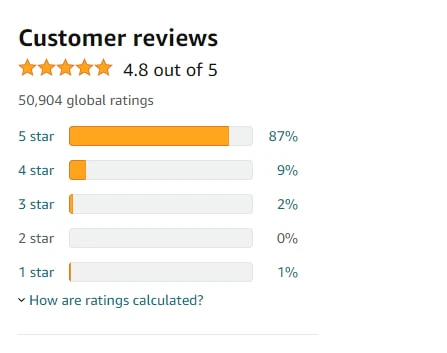
To go with the above point, more information about your product prior to purchasing can also limit negative reviews.
The more your customers know what to expect, the less likely they are to have a negative experience with your product.
HOW TO SETUP YOUR A+ CONTENT
1. Go into Seller Central and navigate to Advertising then A+ Content Manager.
2. Select “Start creating A+ content”.
3. Enter your content name and language.
4. Next, select “Add Module”.
5. Choose the modules you want to include.
a. Module 1: Logo
b. Module 2: Image Header With Text
c. Module 3: Standard Image (Dark Text Overlay)
d. Module 4: Standard Single Image and Details
e. Module 5: Standard Left Image (Single)
f. Module 6: Standard Left Image
g. Module 7: Standard Three Images and Text
6. Add to your chosen ASIN.
7. Review your content then submit.
8. Wait for Amazon to approve your A+ content.
THE ULTIMATE GUIDELINES FOR A+ PRODUCT DESCRIPTION [TEMPLATE]
Some of the guidelines for creating A+ content are the same as the guidelines for creating standard product descriptions.
Things like:
- Make your content scannable.
- Answer product questions.
- Include all relevant product details.
But then there are extra guidelines unique to A+ content you must consider.
Include alt-image keywords.
Amazon requires that you add keywords to every image you upload to your A+ content.
This makes your content inclusive for the visually impaired who use screen reader applications.
While the keywords won’t be indexed for your listing, they will be indexed in Google.
Create infographics.
Infographics present data and instructions in a way that makes customers want to read them.
The added design elements make infographics more attractive to the eye than a solid block of copy.
Creating infographics can be tricky if you don’t know graphic design, so this is something you might want to consider outsourcing.
A designer will know the right typography and balance of white space to use while also including the product details your customers need to know.

Set and use brand guidelines.
Since A+ content is only available to brands, you want your A+ description to be consistent throughout not just the details on one product, but across all your products.
Cohesive elements are what will establish you as a brand to your customers and not a seller of one-off products.
The other plus side of setting and using brand guidelines is that you will be able to reuse some elements and pieces of copy across your multiple A+ descriptions, saving you time and money.
Make yours better than the competition.
If you are stuck on what to include in your A+ description, go get inspiration from your competitors… then try to make it better.
Figure out what their A+ content is missing and be sure to include it.
Maybe they don’t include any brand elements to build awareness that you could add. Or maybe they have too much copy and not enough images making it harder to scan.
Look at several competitors to learn what you can improve with your description.
How To Know If Your Product Descriptions Are Working
There are a few key metrics/tests that will help you know if your descriptions are on the right track or not.
For standard product descriptions, your biggest indicator is your conversion rate.
If you have shoppers coming to your product pages but then not buying, then you know something isn’t right with either your description or your images (or maybe both).
Also, if you have a lot of questions about your product or negative reviews, you need to improve the level of information you are communicating in your description. It should answer the most common questions customers would have and set the expectation of how the product will solve your customer’s needs.
Now, if you have A+ content, you can actually run A/B tests for your product descriptions.
This will definitely tell you which elements are working, and which aren’t.
You may find that you don’t have the time or resources to set up and test all your product descriptions on your own. Many brands find themselves in this position as they focus on growth.
The best thing to do at that point is to get help from an agency that knows Amazon and what works.
If you know you’re already at this point, let us take a look at your current setup and develop a personalized Amazon marketing plan for you.
Final Thoughts
Amazon product descriptions, both the standard description and the A+ description, are what sells your product.
It’s what entices your customers to choose your product over the millions of other products on the Amazon marketplace.
Knowing what to include in your description is half the battle.
This guide has provided you the key information you must include in all of your product descriptions to increase your sales conversions.
It’s up to you now to put it into action.














.webp)

.webp)








.webp)










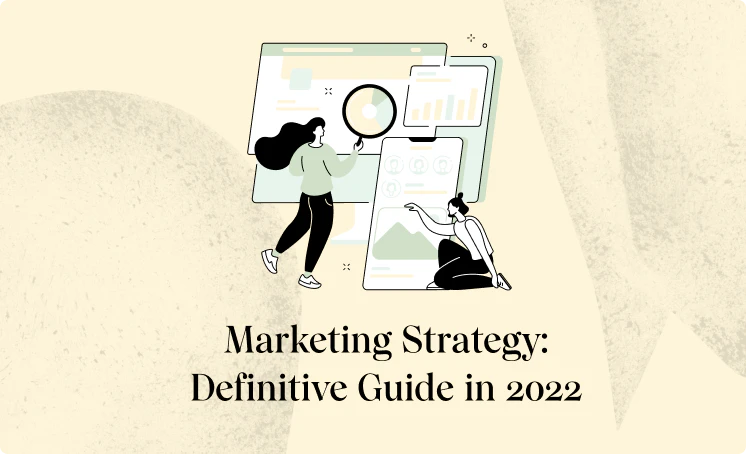

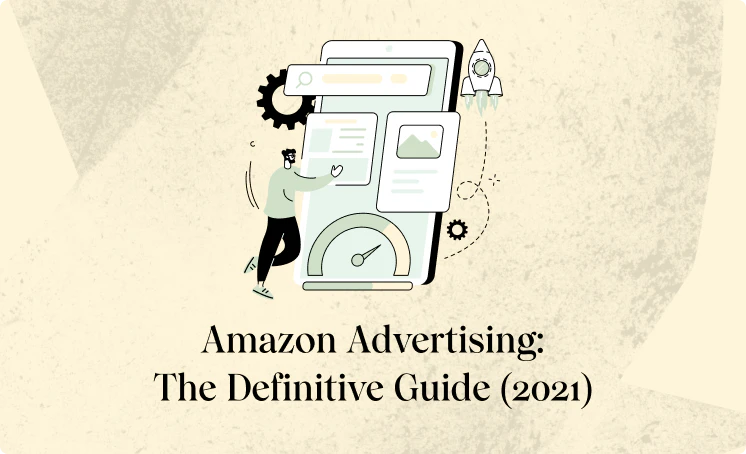




























.webp)






